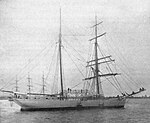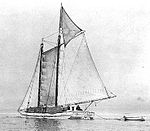Pumping Station No. 2 San Francisco Fire Department Auxiliary Water Supply System

The Pumping Station No. 2 of the San Francisco Fire Department Auxiliary Water Supply System was built in 1912. It is located near Fort Mason, at the northern end of Van Ness Avenue and close to the shore of the San Francisco Bay. It was listed on the National Register of Historic Places in 1976. The listing included a contributing building and three contributing structures. It is a crucial component of the San Francisco Fire Department Auxiliary Water Supply System, which provided a water-supply system separate from the domestic water supply system.It was designed by City Engineer Marsden Manson and was built by contractor Caldwell & Co.The building is in Mission Revival style, and has large windows (about 12 feet (3.7 m) wide and about 20 feet (6.1 m) from sill to top of arch).
Excerpt from the Wikipedia article Pumping Station No. 2 San Francisco Fire Department Auxiliary Water Supply System (License: CC BY-SA 3.0, Authors, Images).Pumping Station No. 2 San Francisco Fire Department Auxiliary Water Supply System
McDowell Road SW, San Francisco
Geographical coordinates (GPS) Address Nearby Places Show on map
Geographical coordinates (GPS)
| Latitude | Longitude |
|---|---|
| N 37.808055555556 ° | E -122.42694444444 ° |
Address
McDowell Road SW
McDowell Road SW
94123 San Francisco
California, United States
Open on Google Maps









